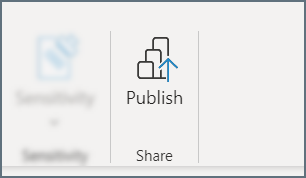PowerBI.com
Version 22.0.8486
Version 22.0.8486
PowerBI.com
This page outlines the steps to connect PowerBI.com to your CData Connect OData Endpoint.
Prerequisites
Before you connect, you must first do the following:
-
Connect a data source to your CData Connect account. See Data Model for more information.
-
Configure your OData tables and columns from your data sources.
-
Generate an Authtoken on the Users page. Copy this down, as it acts as your password during authentication.
Note: To connect PowerBI.com to CData Connect, your CData Connect instance must be hosted in an internet-facing server that is accessible to other entities through a stable URL (for example, myConnectInstance.cdata.com). If your instance of CData Connect is hosted locally and only accessible from a localhost address (for example, localhost:8080) or local network IP address (for example, 192.168.1.x), it will not be able to communicate with PowerBI.com.
Connecting to CData Connect
To establish a connection from PowerBI.com to your CData Connect OData API, follow these steps.
Note: PowerBI.com does not support data import from OData. Instead, you must import your data from OData in the Power BI Desktop application and publish it to PowerBI.com.
-
Open Power BI Desktop to a new report.
-
In the navigation ribbon, click Get data > OData feed.
-
In the OData feed window, select the Basic radio button.
-
In the URL field, enter the OData URL from the PowerBI.com connection modal in CData Connect and click Next.
-
When presented with authentication options, select the Basic tab.
-
Enter your authentication information:
-
Username—enter your CData Connect username as defined on the Users page.
-
Password—enter the password for the user.
-
In the level selection drop-down menu, select the full Service URL.
-
-
Click Connect. A Navigator window appears with the tables you configured in your CData Connect OData Endpoint.
-
Select your desired tables and click Load to load the data, or click Transform Data to perform transformations on the data before loading it.
You can begin selecting fields and visualizations in Power BI Desktop, or you can perform these actions in PowerBI.com.
Publishing to PowerBI.com
After you finish loading your data in Power BI Desktop, follow these steps to publish the data to PowerBI.com:
-
In Power BI Desktop, click Publish in the Home tab of the navigation ribbon.

-
If you have not yet done so, save the
.pbixfile when prompted. -
If prompted, log in to your Microsoft Online account.
-
Choose the workspace that you want to publish to and click Select.
-
When the publishing task succeeds, click Open [filename] in Power BI to open your workspace or click Got it to close the prompt.
For more information about publishing and changing data this way, please see Microsoft’s help article.
Alternative Method
If you encounter issues publishing directly through Power BI Desktop, you can follow these steps:
-
Save your Power BI Desktop file locally.
-
Open PowerBI.com.
-
In the navigation pane, open My workspace, then click + New > Upload a file.
Alternatively, at the bottom of the navigation pane, click Get data. In the Files card, click Get.
-
Select Local File and upload your file.
-
The My workspace page opens with your data split into Report, Dataset, and Dashboard files.
For information about refreshing data imported this way, please see Microsoft’s help article.